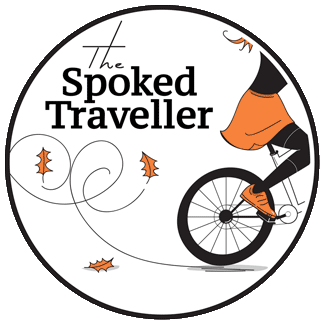12 Jun Boots and Bikes: Conquering Taiwan’s Trails
Story for Ensemble Magazine. 2017
At an incredibly steep 20 percent grade, even walking up Hehuan
Mountain would be difficult. I’m cycling. Have been for two hours. It’s
also one of the hottest days since arriving in Taiwan – the 35-degree heat
bounces off the asphalt of the island’s cross-country highway. Lifting my
head, it’s got to be a mirage ahead: a farmer with a wooden fruit cart.
Sensing my anticipation, he grabs my hand and places five plums into my
palm. Cold, tart, and juicy – my body temperature turns from red hot to
cool. It’s like jumping into a stream.
Taiwan is about 70 percent mountains; it’s bisected by a ridgeline of about
200 peaks. With coastal road riding, and 20 percent of the island designated
as national park and protected land, it’s a hiking and biking wonderland.
My adventure starts with one of the world’s longest climbs in the cycling
world: the King of the Mountain race starts at sea level in Hualien and
reaches an astounding 3,275 metres. The entire race is approximately 100
kilometres. Finishing at Wuling Pass, I absorb the view: a ribbon of road
cuts through a mixed forest of evergreens, ferns, and bamboo; the road
ploughs through tunnels carved into the rocky mountainside and traverses
across suspension bridges draped over gaping gorges.
HEHUAN MOUNTAIN
For my final days, I trade in my bicycle for hiking boots and
head to the middle of the island. About an hour east from
Taichung City, the Seven Heroes of Guguan are a group of
mountains in an isolated old growth forest with natural hot
springs; the forest was one of three logging regions during
the Japanese colonialization.
My taxi driver leaves me in a parking lot at the foot of the
Guguan Taoist temple. I’m alone, except for the red dragons
perched over the temple steps that seem to ascend to infinity,
much like Dongmao Mountain, which I’m about to hike.
For hours I walk, breathing myself into a meditative rhythm,
taking in the soft green moss that carpets the rocks and fallen
trees; it’s paradise. Near the peak, I hoist myself to the top, hand
over hand. I’m resting at the top eating pork rice wrapped in a
banana leaf as the fog rolls in over the forest below. Time to go.
A few days later, I’m ready to tackle the highest point of the
Guguan Mountains: Ba Xian; the trail guide estimates eight
hours return. The moss covered wooden steps feel as natural
as the forest, like they’ve always been there. Conifer trees so
large you cannot hug them, root systems so expansive and
entwined, they might curl around the globe.
Back at my hotel later that day, the hot spring water flows
directly into the indoor pools. Lowering myself into the steam,
tense muscles melt but I want more. Staying only two weeks,
it wasn’t enough to explore the endless trails made for boots
and bikes.

No Comments